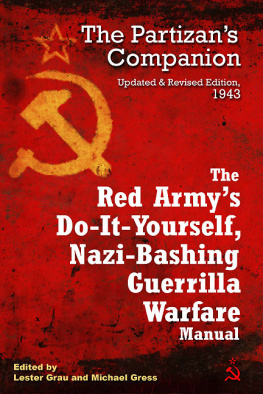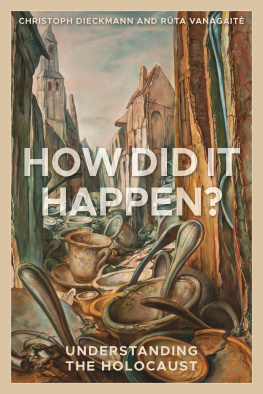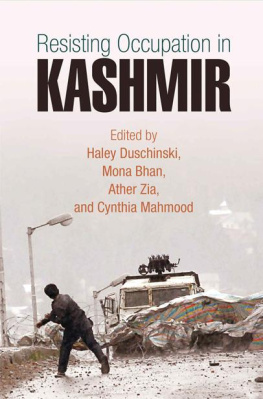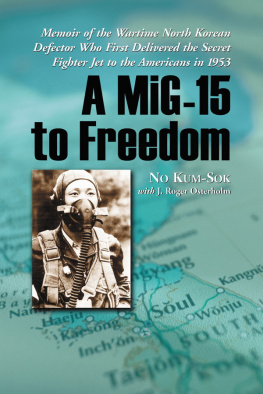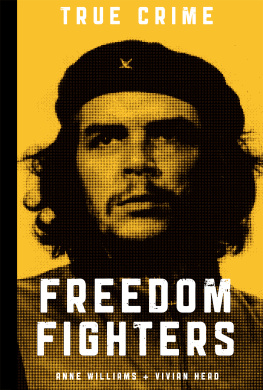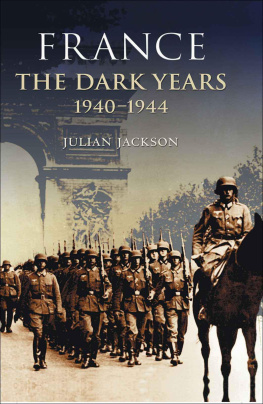
This edition is published by PICKLE PARTNERS PUBLISHINGwww.picklepartnerspublishing.com
To join our mailing list for new titles or for issues with our books picklepublishing@gmail.com
Or on Facebook
Text originally published in 2012 under the same title.
Pickle Partners Publishing 2014, all rights reserved. No part of this publication may be reproduced, stored in a retrieval system or transmitted by any means, electrical, mechanical or otherwise without the written permission of the copyright holder.
Publishers Note
Although in most cases we have retained the Authors original spelling and grammar to authentically reproduce the work of the Author and the original intent of such material, some additional notes and clarifications have been added for the modern readers benefit.
We have also made every effort to include all maps and illustrations of the original edition the limitations of formatting do not allow of including larger maps, we will upload as many of these maps as possible.
LITHUANIAN FREEDOM FIGHTERS TACTICS RESISTING THE SOVIET OCCUPATION 1944-1953
BY
DARIUS BERNOTAS
TABLE OF CONTENTS
Contents
TABLE OF CONTENTS
REQUEST FROM THE PUBLISHER
ABSTRACT
Although the end of World War II enabled devastated countries to rebuild and enjoy a time of peace, another bloody war had just started in Lithuania. Lithuanian Freedom Fighters (LFF) fought for almost a decade (1944-1953) against the Soviets who occupied their country after World War II. This research focuses on LFF tactics that enabled them to oppose greatly superior Soviet forces for an extended period of time and on the factors that resulted in eventual defeat of LFF armed resistance. The research utilized the elements of combat power as the measurement criteria to describe the LFF tactics.
The author concludes that the LFF tactics were to some extent effective. LFF managed to adapt tactics in accordance with a changing situation in terms of shifting Soviet tactics and wrong initial assumptions regarding international support. The other factor that contributed to the LFF success fighting the superior enemy for almost a decade was related to LFF ability to mitigate LFF combat power elements weaknesses while exploiting their strengths.
Nevertheless, the absence of both political and material international support along with Soviet success in cutting off population support to the LFF were two main reasons that resulted in the gradual defeat of the armed resistance.
As asymmetric warfare is likely to continue playing an important role in future conflicts, members of the military profession should find it useful to familiarize themselves with this research. A thorough analysis of LFF tactics employing a combination of regular and irregular warfare to counter superior forces should assist military professionals in further deepening their understanding of asymmetric warfare phenomena thus contributing to their awareness of contemporary operational environment.
ACKNOWLEDGMENTS
I sincerely appreciate my thesis committee, headed by chairman Jonathan M. House, for their dedication navigating me throughout the research process.
Mr. Darius Juodis from the Genocide and Resistance Research Center of Lithuania deserves a special thanks for his insights and constructive critique during oral history interviews and for his support providing material for the research.
Thanks to Major Pavlo Savchenko, my US Army CGSC colleague from the Armed Forces of Ukraine, for his friendly assistance providing me with ideas that shaped the research concept development.
The research would not have been possible without the support of my lovely familywife ivile, son Jokbas, and daughter Kotryna. They paid the ultimate price for this research by sacrificing the opportunity to extensively explore the United States and spend the best year in our life with dad who was continuously deployed in his office conducting the research.
This thesis is dedicated to the Lithuanian Freedom Fightersselfless, courageous, and talented Warriorswho sacrificed their lives in the struggle against a ruthless Communism regime and greatly contributed to re-gaining Lithuanian independence in 1990, almost four decades after the last partisan lost his life in the fight for Freedom.
ACRONYMS
HUMINTHuman Intelligence.
KGBState Security Committee (Komitet Gosudarstvennoi Bezopasnosti). The Soviet Secret Police.
LFFLithuanian Freedom Fighters.
MGBMinistry of State Security (Ministerstvo Gosudarstvennoy Bezopasnosti). The former Soviet Intelligence and counterintelligence agency, one of the forerunners of the KGB.
MVDMinistry of Internal Affairs (Ministerstvo Vnutrennikh Del).
NKVDPeoples Commissariat of Internal Affairs (Narodny Kommissariat Vnutrenikh Del). The Soviet Secret Police Agency, a forerunner of KGB.
ILLUSTRATIONS
Figure 1.Typical LFF Underground Bunker
Figure 2.Well-developed LFF Bunkers Structure
Figure 3.Military Regions, Districts, and Territorial Units as of February 1949
Figure 4.Dr. G. McCormicks Diamond diagram
TABLES
Table 1.War Fighting Functions and Related Tasks
Table 2.Analysis of LFF Combat Power Elements Strengths and Weaknesses Depicting the Conclusions of LFF Tactics
CHAPTER 1 INTRODUCTION
The one is not worth the Freedom, who does not defend it. {1} Juozas Daumantas. Partizanai [The partisans].
The Research Question
Although the end of World War II enabled devastated countries to rebuild and enjoy a time of peace, another bloody war had just started in Lithuania. Lithuanian Freedom Fighters (LFF) fought for almost a decade (1944-1953) against the Soviets who occupied their country after World War II. The LFFs active resistance against Soviet forces is one of the great examples of 20th Century guerrilla warfare. However, there is still a lack of detailed analysis on the tactical factors that enabled LFF to resist superior Soviet forces for such a long period. Therefore, this research focuses on the following primary question: What tactics used by the LFF enabled them to oppose greatly superior Soviet forces for almost a decade? After examining LFF tactics, this research shifts focus to the secondary question: What factors resulted in the eventual defeat of LFF resistance?
Background
Before starting to research LFF armed resistance from a tactical point of view, the research author touches upon several areas that are important in understanding the setting and background of the resistance. The first focus area will cover Lithuanian warriors role in the long and challenging Lithuanian history. The author will then discuss the historical background and main reasons that inspired the LFF movement. The resistances Ends, Ways, and Means will illustrate the concept that the LFF employed throughout the period of resistance. Phases of resistance will further assist in defining the background. And finally, the author will briefly cover the resistance results in terms of losses and benefits.
Warriors played a critical role in enabling the Lithuanian state to survive during the countrys turbulent history. Lithuania faced numerous threats throughout a thousand years of its existence. In spite of relatively small numbers, Lithuanian warriors conquered neighboring lands, thus creating preconditions for the establishment of the Grand Duchy of Lithuania. The Battle of Grunwald (1410) is one of the most important battles in Lithuanian history. During that battle Lithuanian and Polish warriors decisively defeated the Teutonic Knights aggression towards Lithuania and Poland, thus enabling the future prosperity of these two countries. In the 15th Century, Lithuania through alliances and conquest expanded its territory from the Baltic Sea as far south as the Black Sea, becoming one of the largest states in Europe. In 1569 Lithuania merged into the Polish-Lithuanian Commonwealth, but retained a separate Lithuanian army within the Commonwealth. In 1795 as a result of the partitions of the Commonwealth, the Grand Duchy of Lithuania was erased from the political map and through the beginning of the 20th Century Lithuanians were forced to live mostly under the influence of the Russian Empire. However, in conjunction with Polish revolts a large number of Lithuanians conducted armed uprisings against the Russian regime twice, in 1831 and in 1863. Even though the Russians managed to defeat both armed risings and increased repression of the Lithuanian people, it is obvious that the Lithuanians never abandoned the will to resist occupation and live in a free independent country. The restoration of Lithuanian independence in 1918 initiated further challenges for Lithuanian warriors. During a period of two years (December 1918-November 1920,) the newly formed Lithuanian Army defended Lithuanian independence against three aggressors: Bolsheviks, Bermontians, and Poles. However, in 1940 Lithuanian politicians accepted a Soviet ultimatum and directed the well-developed Lithuanian Armed Forces to surrender to the invading Soviets. The Lithuanian Armed Forces equipment was transferred to the Soviets and the Lithuanian army structure was abolished. Nevertheless, the Lithuanian warrior spirit has guided soldiers to defend the country ever since the first written use of the term Lithuania back in 1009. This aspect played a critical role in 1944 when tens of thousands joined the LFF and initiated armed resistance to Soviet occupation.




